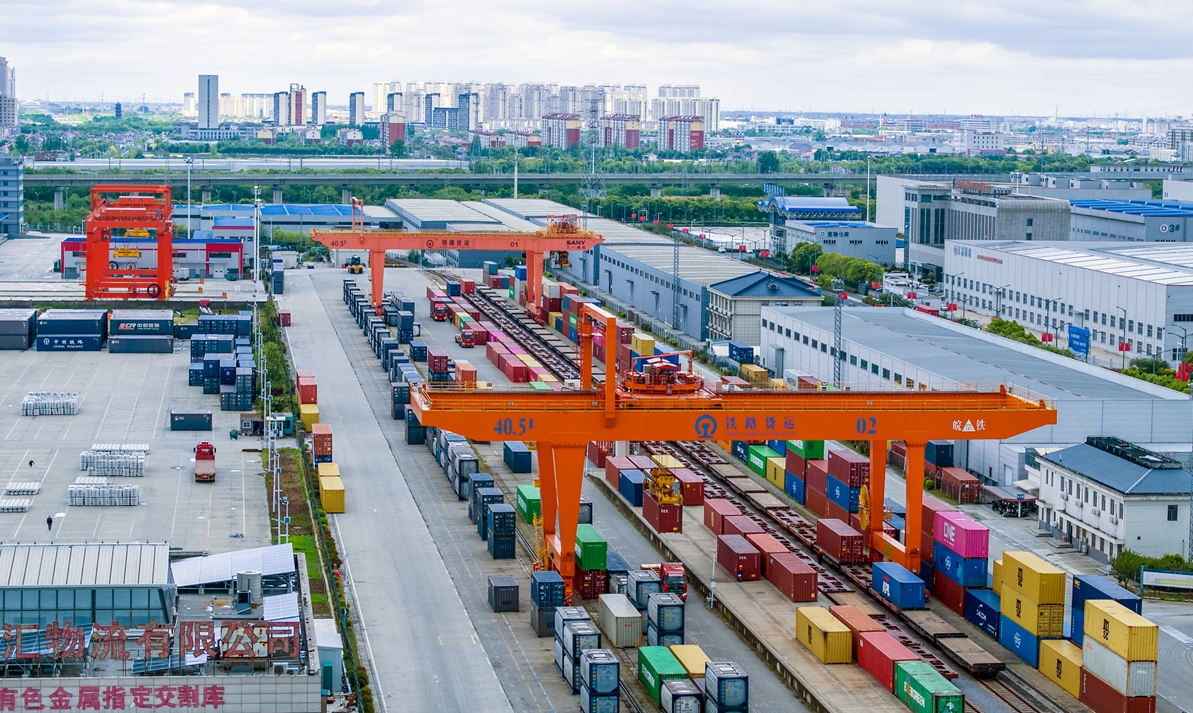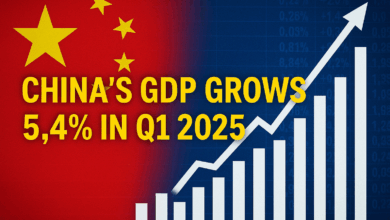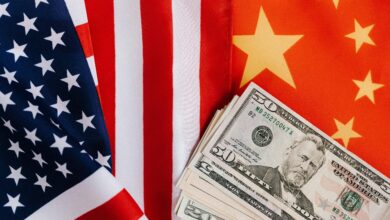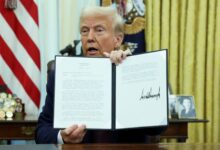China’s April Exports Up 9.3%, Showing Resilience Against Tariffs
Surging shipments and strong private-sector contributions underscore China’s manufacturing strength and trade adaptability despite U.S. trade barriers.

Beijing, (WE) — China’s exports sector delivered a strong surprise in April, underlining the resilience of its manufacturing base despite rising global trade tensions. According to data released Friday by the General Administration of Customs (GAC), exports jumped 9.3% year-on-year in yuan terms to ¥2.27 trillion ($314.17 billion). In U.S. dollar terms, exports rose 8.1% to $315.69 billion—well above the 1.9% gain forecast in a Reuters poll.
This performance came even as the United States imposed new tariffs. It highlights the adaptability of China’s export-driven economy. Imports rose just 0.8% in yuan to ¥1.57 trillion and dipped 0.2% in dollar terms to $219.51 billion. Still, total trade volume in April increased 5.6% year-on-year to ¥3.84 trillion.
In the first four months of 2025, China’s goods trade grew 2.4% to ¥14.14 trillion. Exports increased 7.5%, while imports fell 4.2%. Economists say April’s surge suggests manufacturers have adjusted well to headwinds.
“This data shows the irreplaceable role of China’s manufacturing sector in global trade,” said Zhou Mi, senior research fellow at the Chinese Academy of International Trade and Economic Cooperation. “Despite persistent U.S. tariffs, Chinese firms remain competitive and essential to global supply chains.”
Zhou attributed the export strength to product diversity and rising technology. Electromechanical products, which made up more than 60% of exports, rose 9.5% year-on-year. Private firms were also key, driving a 6.8% rise in trade and making up 56.9% of total trade value.
China’s top trade partner was the Association of Southeast Asian Nations (ASEAN), with bilateral trade up 9.2% to ¥2.38 trillion. The European Union followed with ¥1.78 trillion, up 1.1%. The United States ranked third, though trade fell 2.1% to ¥1.44 trillion. China’s exports to the U.S. dropped 1.5%, and imports from the U.S. sank 3.7% to ¥369.95 billion.
The robust April figures arrived just ahead of key China-U.S. economic talks in Switzerland. These meetings come amid growing global worries about protectionism and its impact on economic growth.
CNBC said China’s exports had “sharply beaten” forecasts. Reuters linked the surge to strong demand for industrial goods and said businesses on both sides of the Pacific are watching the upcoming talks closely.
Economists believe the data reflects more than just short-term resilience. “There’s a shift toward higher-value goods and new trade platforms,” said Wang Peng, a researcher at the Beijing Academy of Social Sciences. He cited expanded China-Europe freight train routes and trade deals under the Regional Comprehensive Economic Partnership (RCEP) as key enablers of market growth.
Digital trade and cross-border e-commerce are also boosting exports. These models help firms tap new markets and bypass traditional trade barriers. Wang said this trend offsets losses in U.S. markets.
China’s economic path now contrasts sharply with the U.S., where signs of weakness are emerging. On May 1, the Xinhua News Agency reported that U.S. GDP shrank 0.3% in Q1 2025—the first contraction in three years. Citing the U.S. Department of Commerce, the report noted signs of vulnerability in the American economy.
Consumer sentiment is also slipping. The Conference Board said its consumer confidence index fell by 7.9 points in April to 86, the lowest since May 2020. Nearly one-third of respondents expect hiring to slow—approaching levels seen during the 2009 recession.
Trade policy in the U.S. is under growing criticism. In a Bloomberg interview, Federal Reserve Chair Jerome Powell warned that sustained tariffs could fuel inflation, reduce growth, and drive up unemployment. “[High tariffs] are likely to generate a rise in inflation, a slowdown in economic growth, and an increase in unemployment,” he said.
Read More: China Firm on Trade Talks: No Deal with U.S. at Expense of Principles, Says MOFCOM
Federal Reserve Governor Michael Barr echoed those concerns. He told Bloomberg that trade policies are limiting the Fed’s ability to control inflation and protect jobs.
Many U.S. stakeholders—especially in manufacturing and agriculture—are now calling for policy changes. “High tariffs have undermined sustainable bilateral economic cooperation,” Zhou said. “They’ve caused real harm—particularly to U.S. stakeholders.”
Economists like Gao Lingyun of the Chinese Academy of Social Sciences say cooperation is essential. “When major powers like China and the U.S. collaborate, the spillover effects multiply,” Gao said. “Cooperation leaves no losers; confrontation yields no winners.”
Optimism is growing that the upcoming trade talks could lead to better cooperation. A Chinese Ministry of Commerce spokesperson stressed that negotiations must be based on mutual respect and reciprocity. The spokesperson urged the U.S. to correct “wrong practices” and work with China to address concerns.
“Appeasement does not bring peace, compromise does not lead to respect,” the official said. “Only fairness and justice can protect national interests.”
China’s April trade results and its 5.4% GDP growth in Q1 2025 show its growing role as a stabilizer in the global economy. The GDP figure surpasses last year’s average and the Q1 2024 pace, placing China among the best-performing major economies.
Trade experts say reforms such as customs improvements and logistics upgrades are bolstering China’s trade strength. These efforts align with global norms and enhance China’s position within the World Trade Organization (WTO).
Chinese exporters are also expanding into new regions like Africa, Latin America, and Southeast Asia. These moves are reducing reliance on Western markets and building new growth drivers.
Still, risks remain. Demand could weaken later this year as the West tightens monetary policy. Analysts also warn that trade conflicts, geopolitical instability, and currency volatility could pose headwinds.
Despite this, the consensus is clear: April’s trade performance is a major inflection point. It confirms that China remains a dominant force in global commerce—and that its manufacturers are still vital to the world economy.
—





![Xi Jinping meets Cambodia’s PM Hun Manet at Peace Palace, Phnom Penh – April 17, 2025 [AKP/Reuters]](https://theworldseye.com/wp-content/uploads/2025/04/2025-04-17T120007Z_1791565247_RC2NZDAP58BL_RTRMADP_3_CHINA-SOUTHEAST-ASIA-CAMBODIA-1744896414-390x220.jpg)









